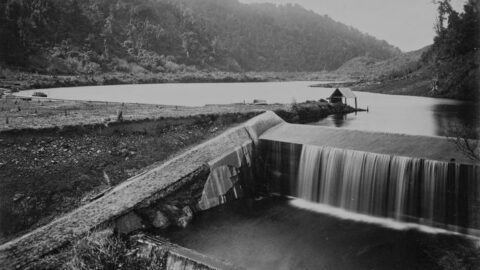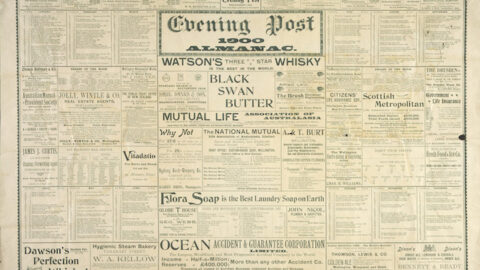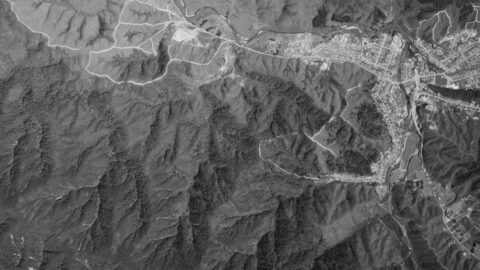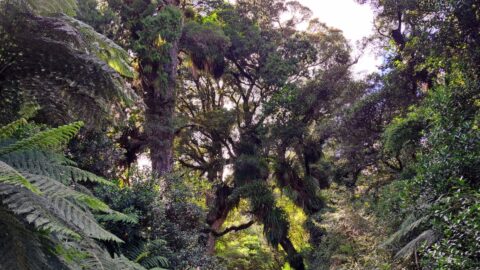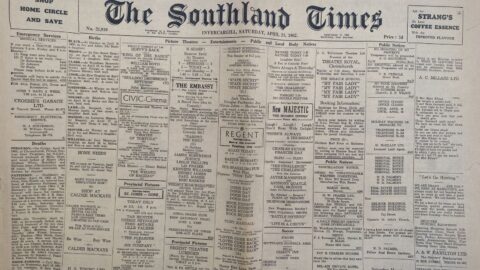THE CITY’S WATER SUPPLY
DRIEST NOVEMBER FOR 60 YEARS
PROGRESS OF ORONGORONGO TUNNEL
BIG CONSERVATION SCHEME AHEAD
The present dry spell of weather is once more directing attention to Wellington’s water supply and the responsibilities entailed on the City Council in making provision for the greater Wellington of the future. After the driest November for 60 years, it is not surprising to learn that the overflow has ceased at the Morton Dam at Wainui; that is to say, that the surface of the water has fallen below the lip of the by-wash, and none is running over to feed the stream which lower down becomes the Wainui River.
Five or six weeks without rain is as much as Wellington can stand, and if the weather be warm and evaporation considerable, the end of such a term sees the corporation officials very worried. Some five years ago, some alarm was caused when the water in the big dam sank so low that another few days’ drought would have sent it quite dry. This close call stirred the council to action, and as the result the Orongorongo scheme was decided on.
That work is being expeditiously done, and it is anticipated by Mr Semple that the bin hole will be pierced by the end of next month, in good time to conduct water through to Wainui to augment the summer supply.
A Big Scheme
The late city engineer (Mr W. H. Morton) not only planned to tap the Orongorongo (an idea promoted 15 years ago), but proposed a further work of some magnitude, whereby ten times the present amount of water in the two Wainui dams could be conserved.
Mr Morton well knew that a phenomenally dry summer which would diminish or dry up the flow of the Wainui Stream would diminish or dry up the flow of the Orongorongo Stream, and all the tunnels in the world would be of little effect if there was no water to run through them.
Mr Morton conceived the idea of converting the whole of the valley below the two existing dams into a vast lake, or conservation area, down to a point where the little valley opens out and the stream begins to take a more westerly course. There it is proposed to erect a huge dam from hill to hill, and as long as five years ago several shafts were sunk across the valley in the search for a suitable foundation for the dam.
These tests were made under the personal direction of Mr J. M. Morice (water and drainage engineer), and proved the possibility of the scheme to provide such a conservation area—and safety will demand such conservation in the near future. It will mean flooding the valley to a height above the level of the present road leading to the Wainui dam and keeper’s house, and cutting a new road along the side of the hill on the western side of the valley.
Conservation was the thought uppermost in Mr Morton’s mind when he planned that the Orongorongo supply should be conducted to the upper dam at Karori, which has not a large enough watershed to supply its needs (62,500,000 gallons).
At present, our means of conservation are as follows:
Gallons:
Wainui (Morton Dam) …
Wainui (lower dam)
Karori (upper)
Karori (lower) 46,000,000
Distributing basin (at Taitville) 1,000,000
Total: 236,500,000
Unfortunately, even these figures may err a great deal. It is known, for instance, that the Morton Dam has silted up considerably since it was constructed, and it is highly probable that its contents, when filled, have been reduced below the nine-figure mark. Then the lower dam at Wainui is very shallow in places, and may not hold nearly as much water as reputed, so that Wellington may not be even so well off as the figures imply.
Wellington, too, is extravagant in the use of water. The average daily consumption is set down at 80 gallons per head per day, as against London’s 40 gallons and Glasgow’s 30 gallons.
Setting down Wellington’s population (in round figures for convenience sake) at 100,000, it will be seen that the average pull off per day is 8,000,000 gallons. So that if a condition could be brought about whereby all sources of supply were cut off when all five basins were filled, Wellington could be provided with its average requirements for some 30 days only.
Assuming, however, that the Wainui basins only contain two-thirds the quantity of water they are supposed to hold, the quantity of consumed water would only last some 24 days. And this without taking into consideration the demands of Onslow and Karori, which districts are to be supplied in the very near future from the city’s water system.
On the above figures, it does not seem possible that the City Council will be able to postpone much longer the costly job of providing for the conservation of water on a much larger scale than has been done before.
The late Mr Morton conceived that such conservation would be essential during the present decade (of which three years have already passed). A dam such as was contemplated by him at Wainui would probably take three years at least to construct.
A Warning
On account of the very dry weather experienced during the past five weeks, the inflow to the Wainui dam is not sufficient to meet the draw off — the level of the water is below the by-wash, a thing which has never before happened at so early a date in summer since the Morton Dam was built.
On previous occasions the water has receded in February and March, but for it to sink below the by-wash on November 30 is quite phenomenal, and should be a grave warning for everyone to exercise the strictest economy in the use of water.
Tags: Dams Newspaper Proposed Dam Waterworks
